Ice scouting
Lake Baikal: Freezing over in 2021-2022
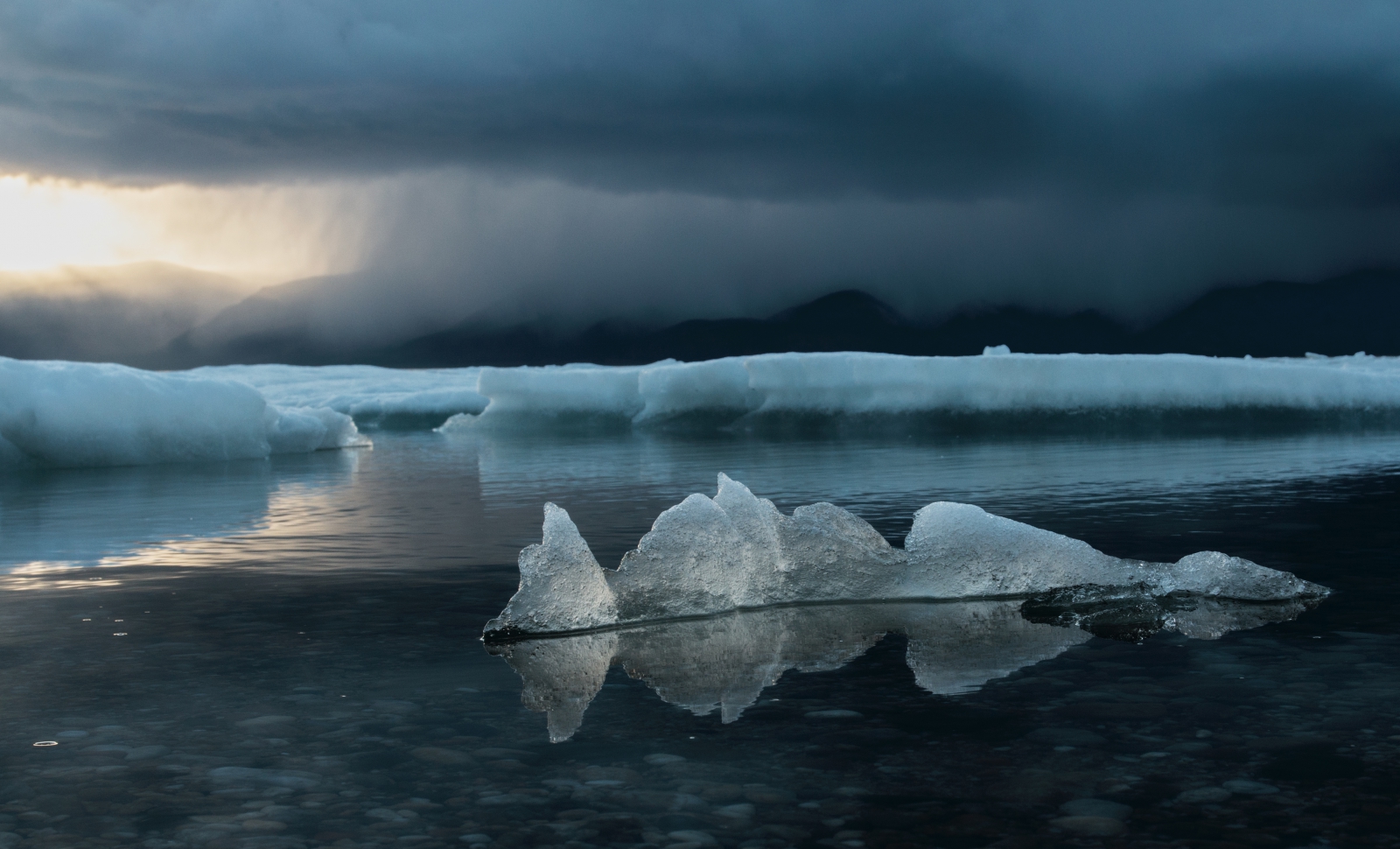
At the very beginning of January, this year, Lake Baikal water area in the north was shaped by powerful shore ice. The northern part of Lake Baikal completely froze over this year a little later than preceding years. From the Small Sea (lake’s area between Olkhon Island and the mainland) to the village of Buguldeika ice formed by January 05, and by 11.01 it was already 10 to 30 cm thick, with washouts and open water in the Olkhon Gate Strait.
Since January 15, the fantastic ice of Lake Baikal on its Small Sea began to sweep away, and the crystal-fabulous views of the underwater world of Lake Baikal disappeared under the snow on the ice.
.jpg) This year, due to the slower rate of ice freezing, the “highway” on the ice between the mainland and Olkhon (from Kurkut to Irkutsk Bay) opened later than usual - on February 18: the length of the crossing is 11.8 km, the thickness of ice varying from 47 to 50 cm; vehicles weighing no more than 4 tons are allowed to travel here. However, the main problem of the later opening of the crossing road for cars here was probably not the ice freezing rate, but the Lake’s only mammals – freshwater seals: living under ice , they made holes for their breathing, under which there are cones-voids, and during the construction of the road they had to go around avowing the on the future ice “highway”.
This year, due to the slower rate of ice freezing, the “highway” on the ice between the mainland and Olkhon (from Kurkut to Irkutsk Bay) opened later than usual - on February 18: the length of the crossing is 11.8 km, the thickness of ice varying from 47 to 50 cm; vehicles weighing no more than 4 tons are allowed to travel here. However, the main problem of the later opening of the crossing road for cars here was probably not the ice freezing rate, but the Lake’s only mammals – freshwater seals: living under ice , they made holes for their breathing, under which there are cones-voids, and during the construction of the road they had to go around avowing the on the future ice “highway”.
In the south of Lake Baikal – around the future route of the Baikal Ice Marathon and along the south-eastern shore during January 22-27, steadily increasing snowdrifts were observed, in the water area of the lake –broken ice, unfettered ice fields. The ice surface here was fully formed at the very end of January - that is, Baikal fully froze over on February 01 this year.
At the very beginning of January, Lake Baikal water in the north took shape of with powerful ice barriers, completely freezing over this year a little later than the average Baikal.
From Small Sea (between Olkhon Island and the mainland) to the village of Buguldeika ice formed by January 05, and by Jan.11 the ice there was already 10 to 30 cm thick, with washouts and open water in the Olkhon Gate Strait.
.jpg)
On February 04, the Kultuk wind snatched snow from the hills of the Sayan ridge, carried it towards the source of the Angara and further to Baikal, covering with snow a section of the possible route of the 18th BIM, which is closer to the eastern shore. However, the subsequent night winds partially dragged it away, still leaving the eastern part of the BIM course , as usual , snow-covered. But the ice has already begun to build up.
On February 04, the Kultuk wind snatched snow from the hills of the Sayan ridge, carried it towards the source of the Angara and further to Baikal, covering with snow a section of the possible route of the 18th BLM, which is closer to the eastern shore. However, the subsequent night winds partially dragged it away, still leaving the eastern part of the BLM highway, as always, snow-covered. But the ice has already begun to build up.
The Stanovaya ( ice-pressure ) crack, passing from the village of Bolshye Koty towards Cape Kadilny, in some areas reached two meters, in some places there was a hummock.
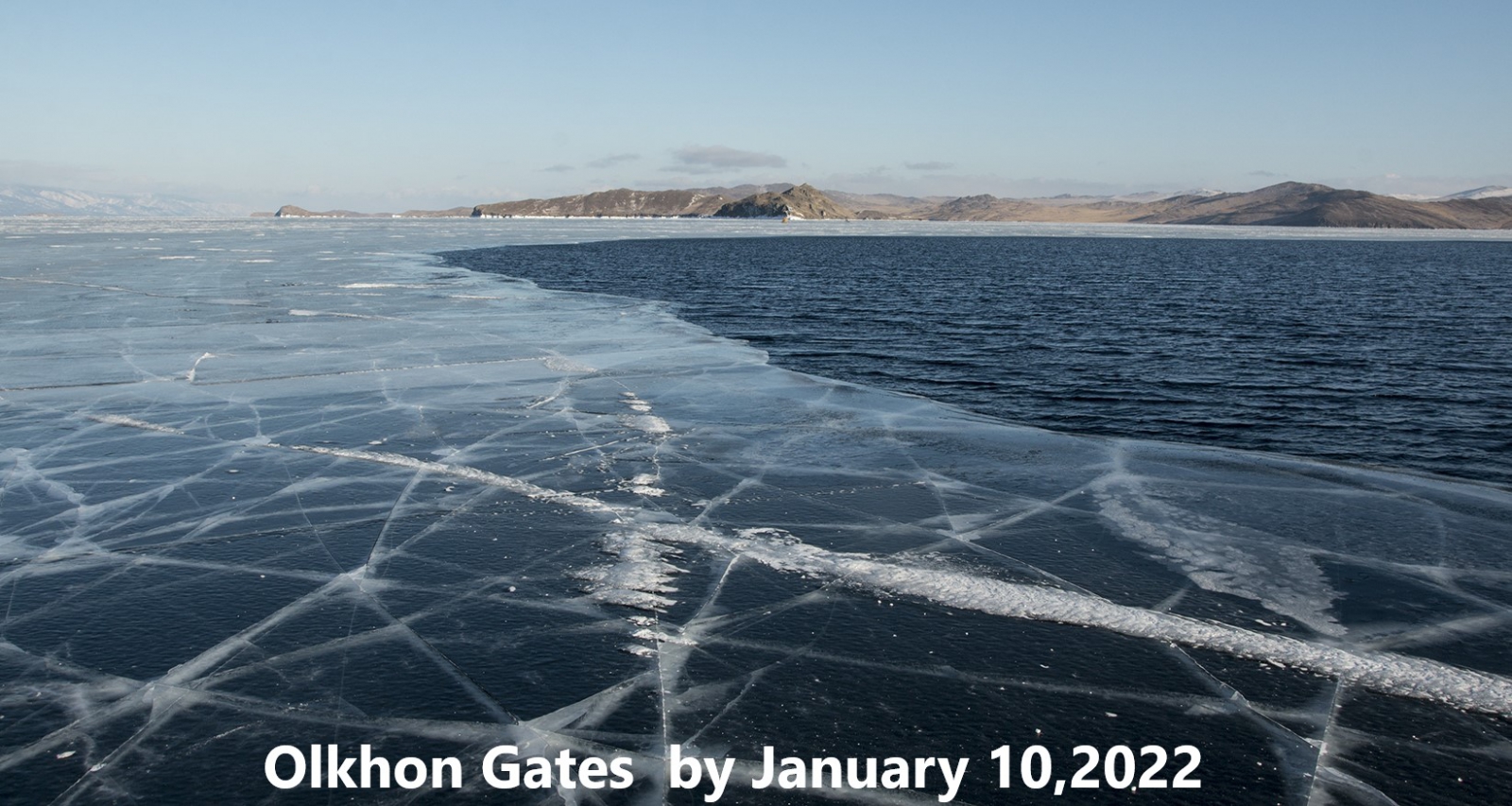 "The weather is warmer than usual, when the average daily air temperature exceeded the climatic norm by 9-11 degrees, was observed from February 6 to 8. This heat was associated with a cyclone passing through the north of the region. Daytime air temperatures at this time were -2,-10 degrees, thaws of 0,+2 degrees were noted in the southern and western regions. Thaws in the first decade of February are not a rare event, over the past 15 years of meteorological observations, they were noted in 2021, 2020, 2016, 2015, 2009 and 2007," the weather forecasters said.
"The weather is warmer than usual, when the average daily air temperature exceeded the climatic norm by 9-11 degrees, was observed from February 6 to 8. This heat was associated with a cyclone passing through the north of the region. Daytime air temperatures at this time were -2,-10 degrees, thaws of 0,+2 degrees were noted in the southern and western regions. Thaws in the first decade of February are not a rare event, over the past 15 years of meteorological observations, they were noted in 2021, 2020, 2016, 2015, 2009 and 2007," the weather forecasters said.
Our note: December 2021 and the first week of January this year were, on average, slightly warmer than in the past 5-6 years. In 2021, Baikal frose a little later on the Small Sea than in 2020. However, in 2019, ice appeared there a week earlier than in 2018. And in 2022, Baikal froze in its southern part, completely freezing on the night of February 01, 2022 (11 days later than in the past and 12 days later than the year before). But it also happened that Baikal froze at the very end of February. Everything, so far, is in its own – Lake Baikal - turn.

Notes of the BIM support team head Andrey Tanichev (PhD):

Notes from 02/16/12 from the south of Lake Baikal by Nikolay Alekseev , of BIM team:
"With the onset of the traditional Buryat holiday of the White Month of Sagaalgan, frosts hit South of Baikal, as it should be these days, and in the last winter calendar month they reminded us that we are Siberians. Spoiled by the warmer winter, nevertheless, we do not mind a light invigorating frost 20-25 degrees Cntigrade below zerow. Especially those who are used to spending their free time on the ice of Lake Baikal. Thanks to the two-week cold snap, the ice has steadily strengthened and now reaches an average of 40 cm, covered with a small layer of snow of 5 up to , sometimes, 10 centimeters thick. Many dozens of fishing tents and friendly family teams spending their weekends on the ice expanses of Southern Baikal testify the reliability of the ice and the love of the local population for active recreation."
.jpg)
PHOTOS of the Ice scouting trips during Februar,15 - February, 23, 2022
The ice scouting trips ( latest on Feb. 22) showed that the ice in the area of the XVIII Baikal Ice Marathon in spite of freezing later than last year grew quite steadily, and as of Februart, 22, was over 35 cm thick, in the average. The snow cover is currently thicker than 8 cm in the area closer to the eastern shore of lake Baikal, in Tanhoy direction. Three scouting trips enabled us to find the posible location of the run course of the XVIII Baikal Ice Marathon which can be ost convenient for the runners. In comparison to the last years's BIM ice course, the current track of the course after the middle of the lake shall be turning slightly left ( compared to the last year's BIM course which was laid to the right from Listvyanka). Average thickness of ice in the area of the course is over 35 cm, in some places - over 50. In the eastern area of the ice course the ice is not that thick as in the western area.
We are planning two more ice scouting, the last one to be combined with marking the ice course with flags.
See some photos of the ice scouting trips by clicking here
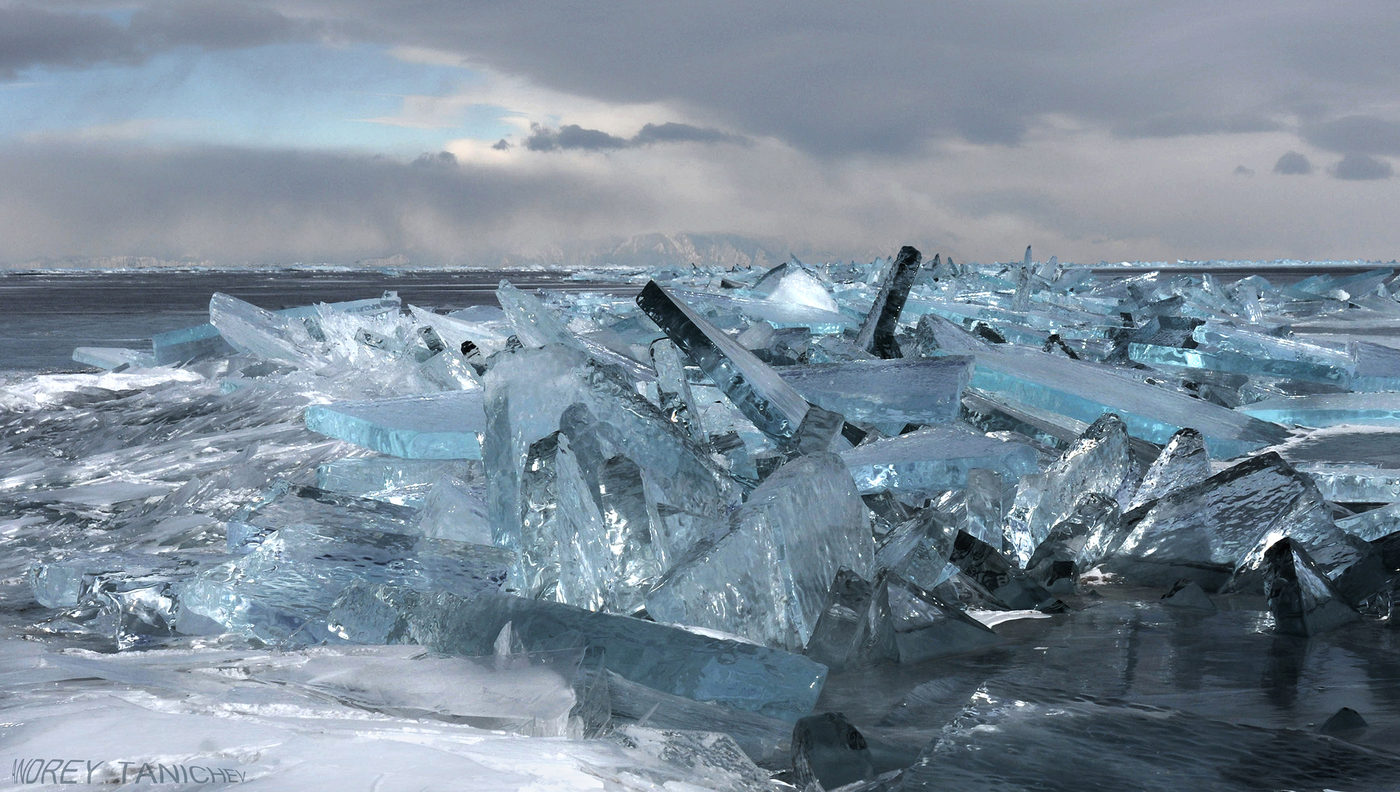
As we previously , on the 2020 Year eve, informed you, Lake Baikal was frozen in its northern and middle parts by December 26, 2019 . As usual, it took some more time then when Lake Baikal started gradually freezing over in its southern part. By January 08, 2020, southern part of lake Baikal still had huge open water areas with lots of ice fields floating, drifted with wind and underwater currents. However, in spite of 2019 warmer autumn ambient temperatures compared to the last year Lake Baikal completely froze over on the night of January 12, 2020 which is a week earlier than last year. In 2019 Lake Baikal froze over in its southern part on January 12 but strong “verkhovik” north-eastern wind, unleashed by Baikal within the night of January 13, 2019, broke up the just formed ice allowing it another week to steadily refreeze again. This year the “verkhovik” wind did not happen to blow which made it possible for the ice cover of the lake to consolidate and, remaining firm, continue its growing and thickening.
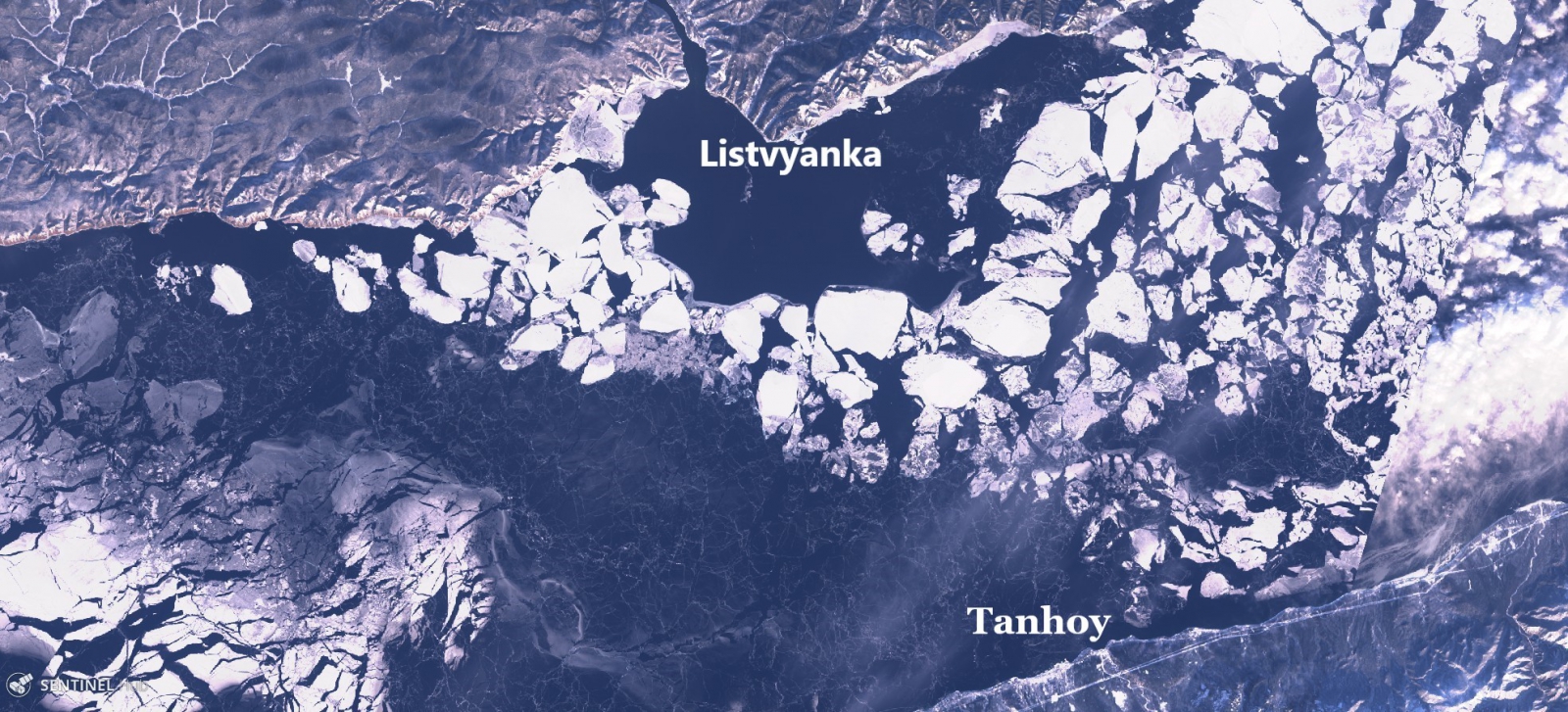

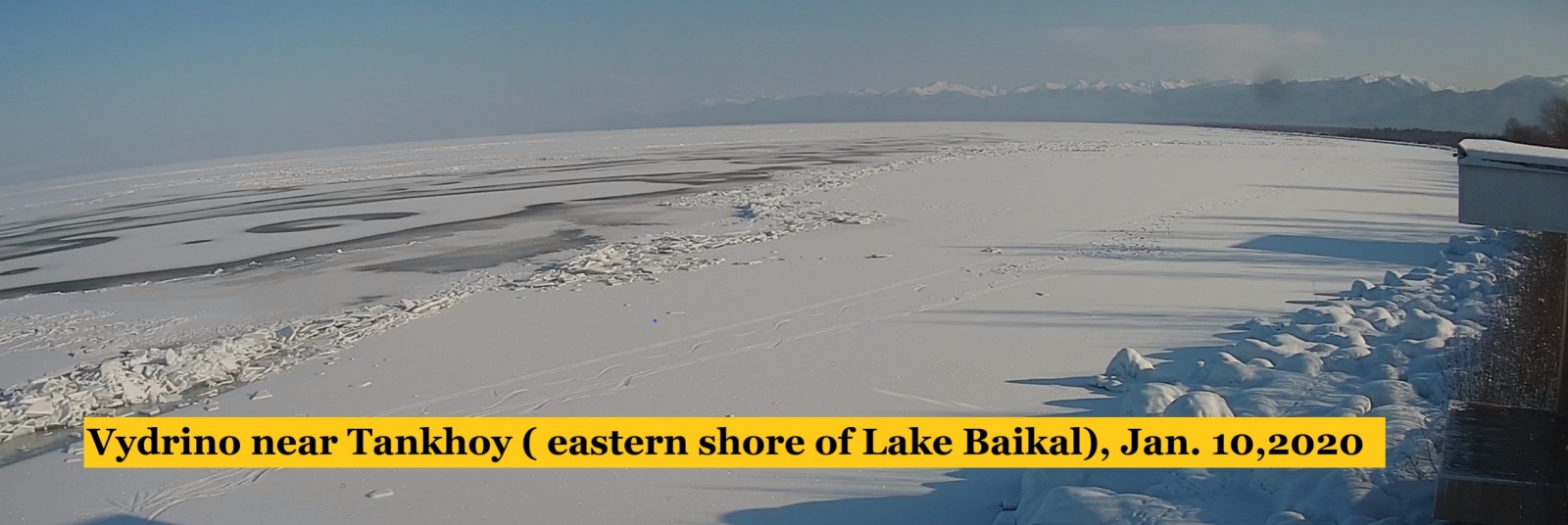
 Last Saturday , on Jan. 18, 2020, BIM team made the 1st ice scouting trip in the area of future 16th BIM ice running course. The distance scouted was within the area of 12 km from Listvyanka ( western shore) into the open frozen sea. Average ice thickness on the scouting traverse was about seven inches ( 18 cm). The ice scouting made it clear that, at least, last 6-7 km loop of the future BIM run course will definitely have different coordinates compared to the last year’s one . Due to the ice pressure ridge that this year settled down further south than last year, the ice hummocks likewise are currently located at other spot. We will have to avoid them and find the loop for proper route which has to be both safe/ best comfortable for running and within total distance of 42 km frame. The ice surface as one can see from the video below until the 12 km distance from the western shore ( not counting the above indicated ice pressure ridge area) is, at time of the ice scouting, mostly not covered by snow layer.
Last Saturday , on Jan. 18, 2020, BIM team made the 1st ice scouting trip in the area of future 16th BIM ice running course. The distance scouted was within the area of 12 km from Listvyanka ( western shore) into the open frozen sea. Average ice thickness on the scouting traverse was about seven inches ( 18 cm). The ice scouting made it clear that, at least, last 6-7 km loop of the future BIM run course will definitely have different coordinates compared to the last year’s one . Due to the ice pressure ridge that this year settled down further south than last year, the ice hummocks likewise are currently located at other spot. We will have to avoid them and find the loop for proper route which has to be both safe/ best comfortable for running and within total distance of 42 km frame. The ice surface as one can see from the video below until the 12 km distance from the western shore ( not counting the above indicated ice pressure ridge area) is, at time of the ice scouting, mostly not covered by snow layer.
The ice cover by the eastern shore of Lake Baikal , near Tanhoy, (not yet scouted by us) is seen and reported to have the 4 to 6 inches snow cover on ice. However, the situation is always likely to change. Man supposes, Baikal disposes.
See the video with Baikal cover of week fresh ice made by the BIM team and the 1st runner of 2020 ice frozen Baikal.
Another video features the winter voice of Lake Baikal. Remember in the BIM Rules: “Do not get frightened during the run on ice course once huge rumble can sound from ahead and the ice can shake under foot. This is a usual phenomenon of the internal ice cracks formation, and it will not cause any wide ice opening. Such huge rumbles & thundering like distant cannon fire, called by locals "Baikal symphony", can occur near ice pressure cracks as well as the ice shaking and rumbling can also be caused by the Earth tremors which in the seismic area of lake Baikal are very usual – “mantle plumes of the Mother-Earth are very near here...”
Live Baikal Starts Freezing in 2019
On the eve of New Year of 2020 we share with you our brief BIM video-newsletter of Lake Baikal freezing start in this December. See live and magic Baikal breath saturating its waters with oxygen before putting an ice blanket on its huge body, as well as the freshwater seals and nature ice cycle fun production.

Ice Scouting Reports in 2018
On February,15, 2018 the 3rd BIM ice scouting trip by hovercraft made it possible to find the passage through the huge field of blizzard snow dunes that hide beneath lots of refrozen broken, cobblestone ice and large grain ice with needle like blades on the surface.
Due to strong north-western wind blowing for a few days, the newly formed ice in the area of BIM had been twice broken and ripped apart. After refreezing, it fromed a huge filed of big cobblestone and wind scalooped ice that now stretches for over 8 km long/2 km wide (17 km away from the western lakeshore).

The hummocks of the ice pressure ridge in the area of BIM were nearly at same place as last year, and we could monitor it quite well to adjust future BIM ice course in its conditions. But the pancake and cobblestone ice fields were hidden under the snow dunes created by blizzard, making it impossible to plot the safe and more comfortable for running ice course, unless we can find the passage through it. If we have failed to locate such a passage, we would have to cut off the cobblestone and pancake ice cover by armored track-laying vehicle, or manually. Anyway, too much of fantastic work could await us!
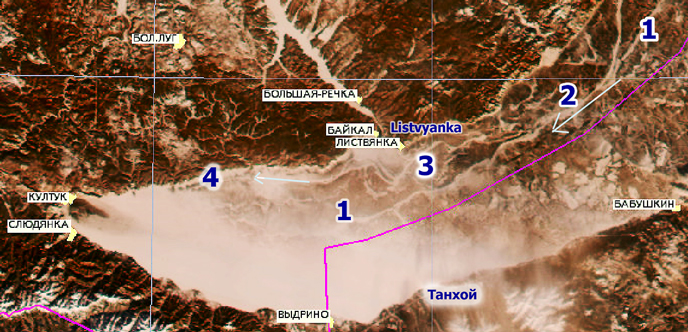
The satellite photos of the ice covered area of Lake Baikal showed unusually long ( over 200 km) ice pressure ridge, stretching from the area of eastern shore of Olkhon Island, all way to the southern tip of Lake Baikal, parallel to its shore ( #1). The usual “cape-to-cape” ice pressure ridge in the area of BIM ridge ( #2) , merges into the #1 ice ridge , contunuing further to # 4 destination. Numbered as three above is that huge snow duned cobblestone and slush balled field.
The two ice scouting trips by 4WD vehicle (tires wrapped with chains) were not successful, no any passage through was found, two tires were seriously punctured.
On February, 15, on a nice sunny weather, we started out by hovercraft from Listvyanka across the lake in search of the passage. It was found quite unexpectedly after a number of long shuttle, run about rides. Alongside passage search, we carried on measuring of ice thickness all the way using cordless hammer drill with Russian made single oversized carbide bit. It’s was easy sledding to drill the ice with this “Praktika-Profi” bit , better than any other, goes with a swing ! (twice less expensive than similar Japanese one; see the photo).
 The working length of the drill bit we used is 55 cm, in all our measuring drills of the ice, the bit went completely into the ice, but did not reach the water. This allows us to claim that average thickness of ice en route the BIM run course is over 55 cm. Even at the eastern shore, where ice is usually not that thick as near the western one, this year it was same thick. In some places, the ice was over 65 cm thick.
The working length of the drill bit we used is 55 cm, in all our measuring drills of the ice, the bit went completely into the ice, but did not reach the water. This allows us to claim that average thickness of ice en route the BIM run course is over 55 cm. Even at the eastern shore, where ice is usually not that thick as near the western one, this year it was same thick. In some places, the ice was over 65 cm thick.
Next week we will continue ice scouting work and lay GPS coordinates for possible BIM run course (we need to have two options in case earthquake or weather “day-night” temperature fluctuations cause changes in the ice pressure ridges, or fresh cracks appear as living Lake Baikal breathes, opening up its water to enrich them with oxygen.
Below, see some images from this ice scouting trip.
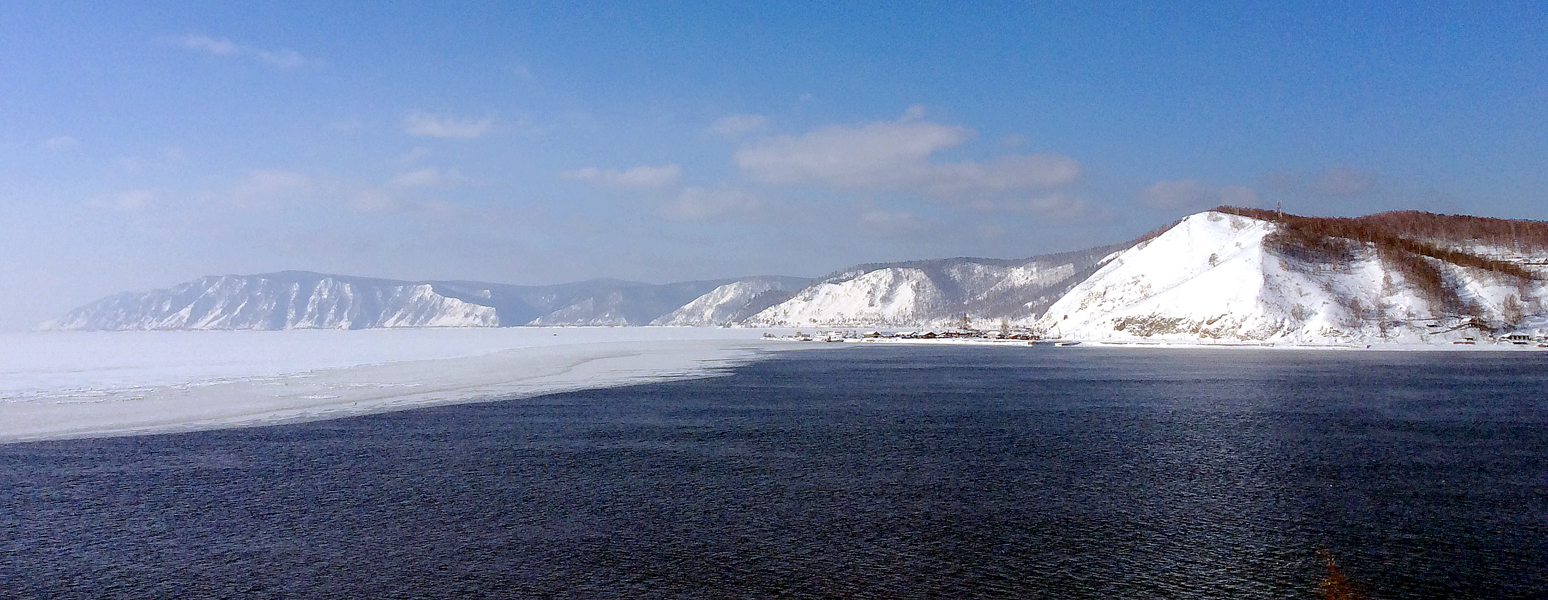
Above and below. Oufflow of the Angara river from Lake Baikal ( the Lake's only outlet and the widest river source in Eurasia). The Angara's outflow never freezes in winter: due to very fast current ( steep river bed gradient) it takes the water of lake Baikal after entering the Angara's river bed about 10 km to cool down and be able to freeze over its suraface. Below, on the right, across the river's exit , there's a small town of Port Baikal from where famous historical RoundBaikal railway begins.
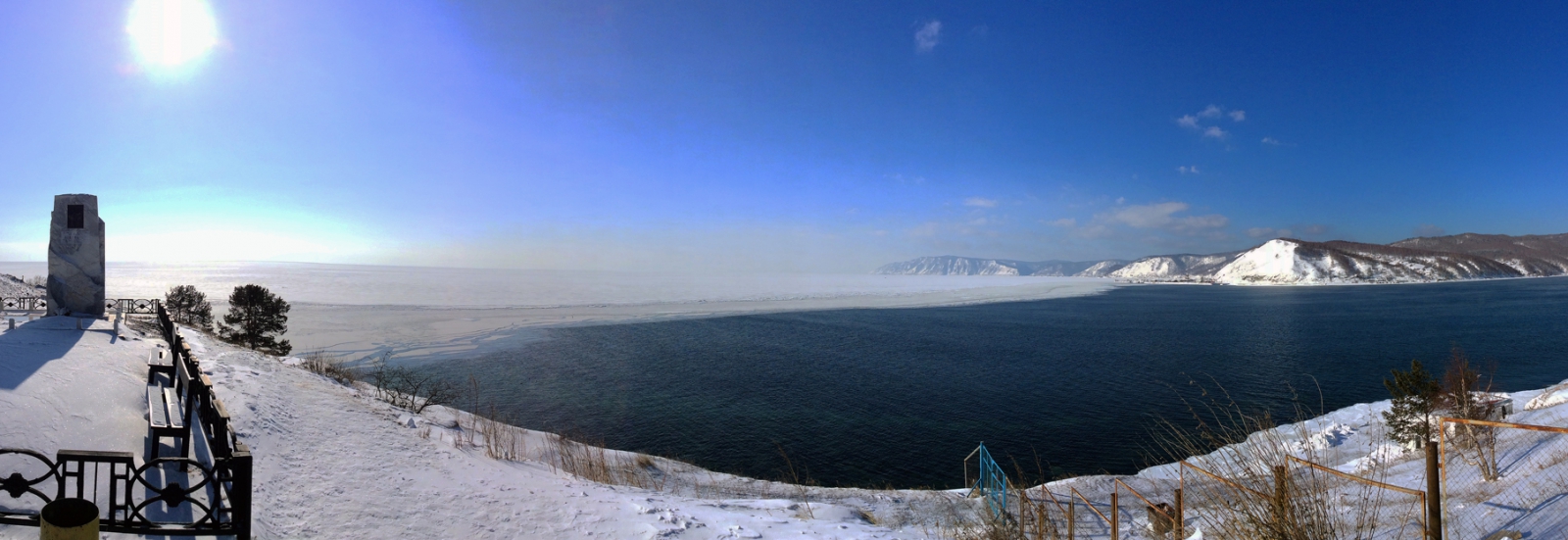

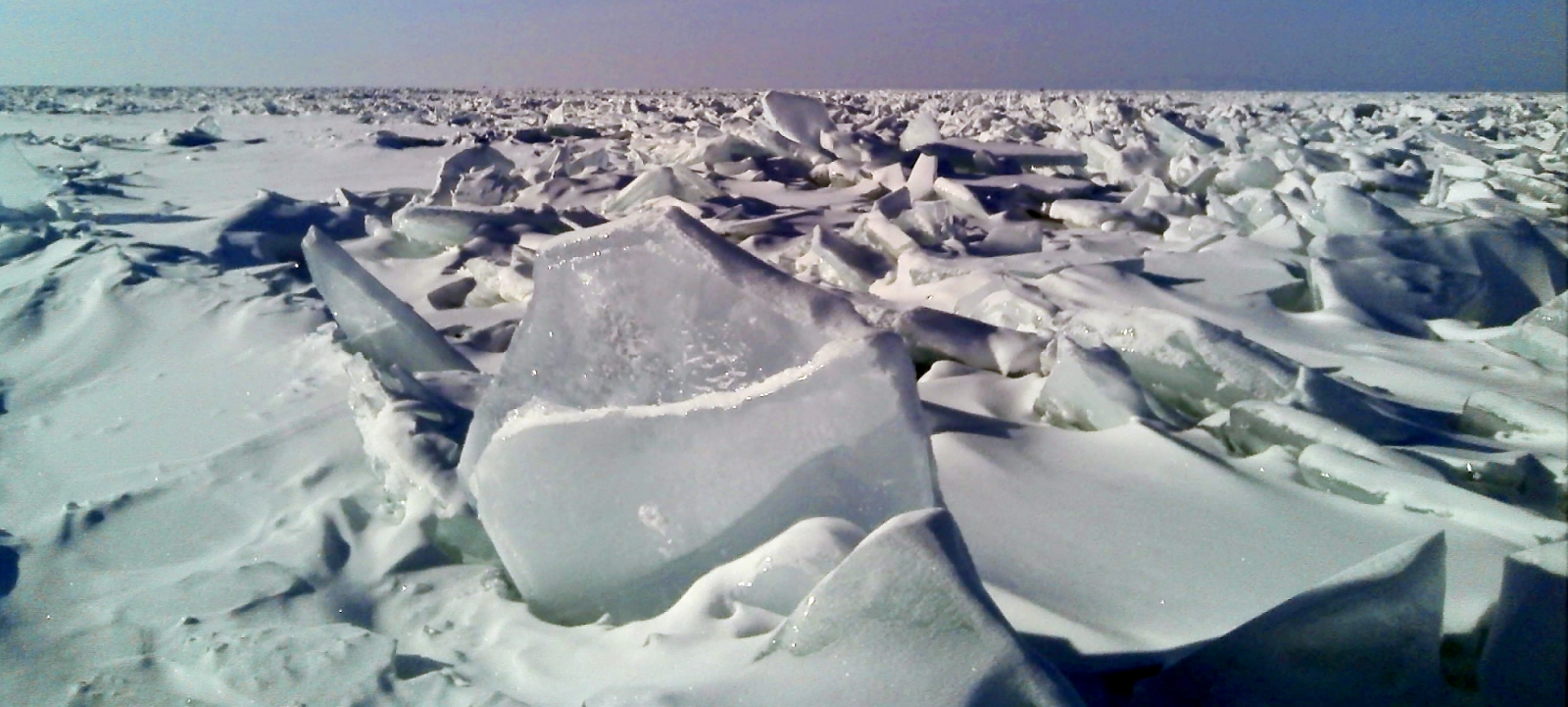
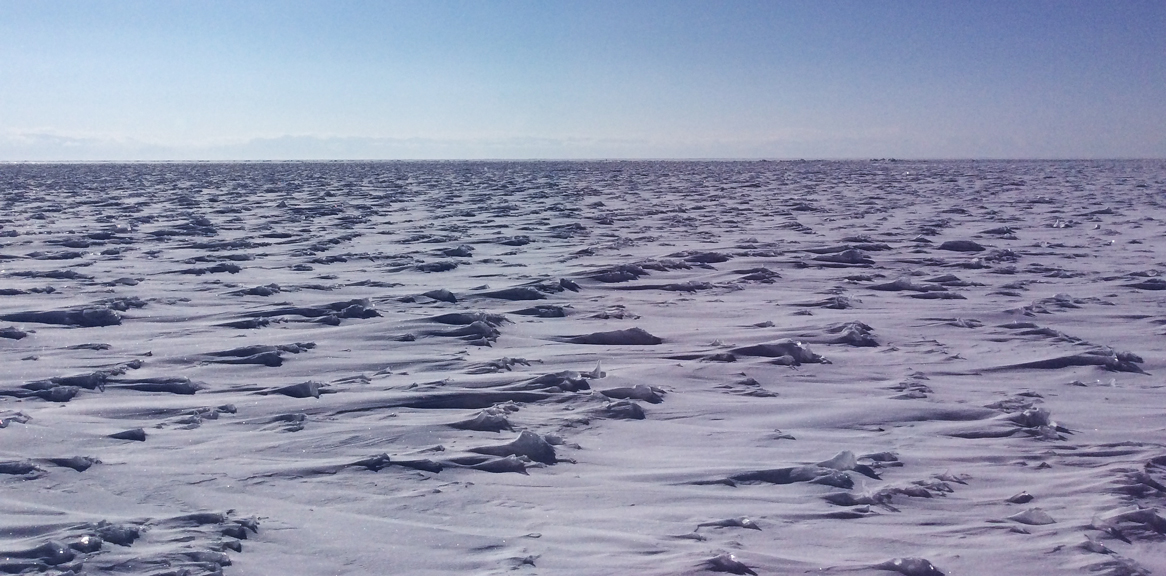


____________________________________________________________________________________________________
Report # 1 of January 17, 2018
By January 04,2018 Lake Baikal froze over in its northern part, but thickness of ice allowed only lightweight snowmobiles to ride on the frozen water surface not far from the shoreline.
In the middle of Lake Baikal, in the area of Maloye Morye (so-called Smaller Sea- section of the lake enclosed by the western shore of Olkhon Island and western mainland bank of Lake Baikal), the ice formed on January 06, and grew on January, 07, 2018 by 15 cm. Interesting to note, that the first week of the new year was marked by three earthquakes in Lake Baikal central depression ( Jan.01 – 3.1 on the Richter scale , Jan. 2 – 4 on the scale, followed by 3.4 on January 07). In spite of the earthquakes, one of which occurred near Olkhon Island, Lake Baikal froze over in the Maloye Morye, and the ice did not break down. However, one-meter wide crack appeared near Ogoy Island.
As for the southern part of Lake Baikal , in the area of future BIM run course to be laid between the two opposite banks of the lake, the water of Baikal, first, froze over on January,13 ( see the photos below), but the wind from the Angara river ( the one which usually “meets” the BIM finishers near the 30th km mark of the run course) broke down the fresh ice surface into huge ice floes of 200 meter and more in diameter and scattered them. This time the Angara wind blew strong breaking down just formed ice and then coiling the ice and snow in a unique aerial ‘tornado’ shaped, whirling masses, both near Listvyanka and opposite it, in Tanhoy (possible BIM finish or start lines), as it is seen on a satellite photo below.
Today Lake Baikal surface refroze again. If the ‘verkhovik” higher wind or the Angara wind will not blow the next night, Lake Baikal can remain frozen over its entire area. The upcoming usual frosts on Epiphany celebration, expected in two days, will then facilitate growing of ice cover of the Great Baikal. If this happens, then by the end of next week we may be able to go on the first ice-scouting trip. However, as they say, man supposes and Baikal disposes.
We will keep you all further informed about details associated with the preparation to 14th edition of Baikal Ice Marathon “For preservation of clean water”.

Ice surface of the Smaller Sea area of Lake Baikal. January 07,2018. Photo by Konstantin Mamadzhanov

View from ice grotto near Hoboy Cape ( Olkhon Isand).Jan.06 . Photo by Konstantin Mamadzhanov
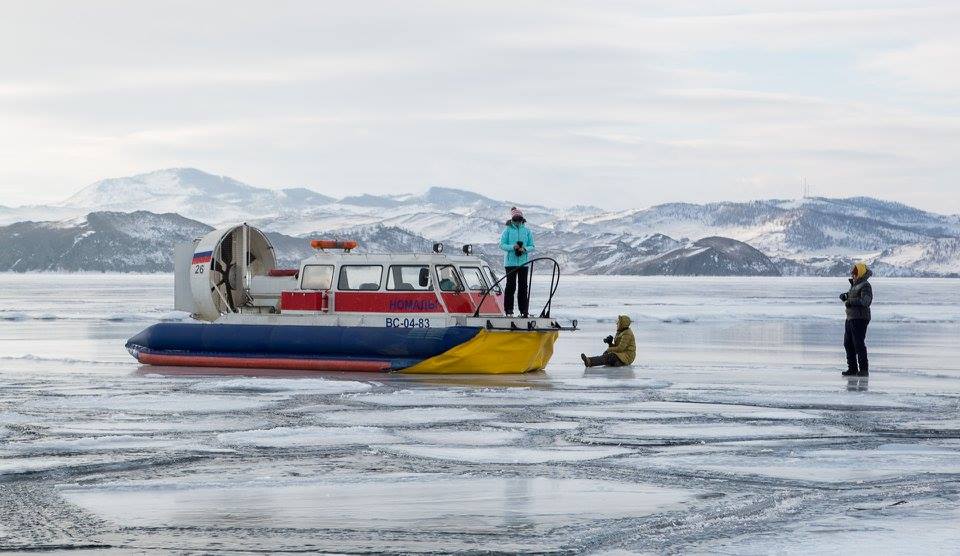
Smaller Sea near Olkhon Isand, Jan.06 . Photo by Konstantin Mamadzhanov 
Water run-ups frozen on the shoreline rocks. Jan. 07, 2018. Photo by Konstantin Mamadzhanov.
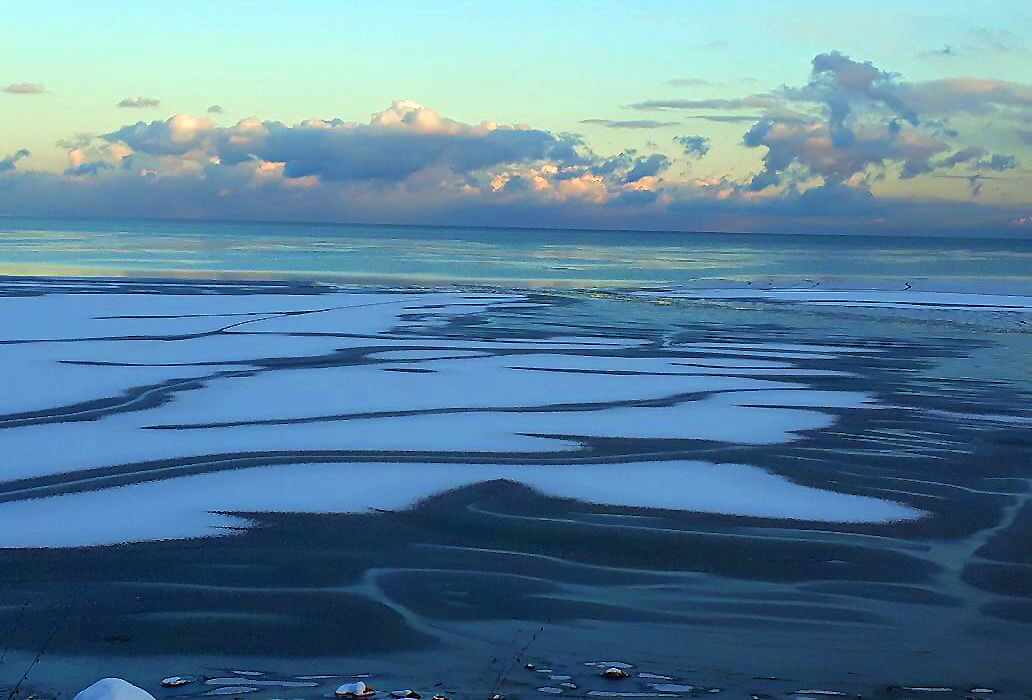
Freezing of Baikal in Kultuk (southernmost point), Jan.13. Photo by Nikolai Alekseev
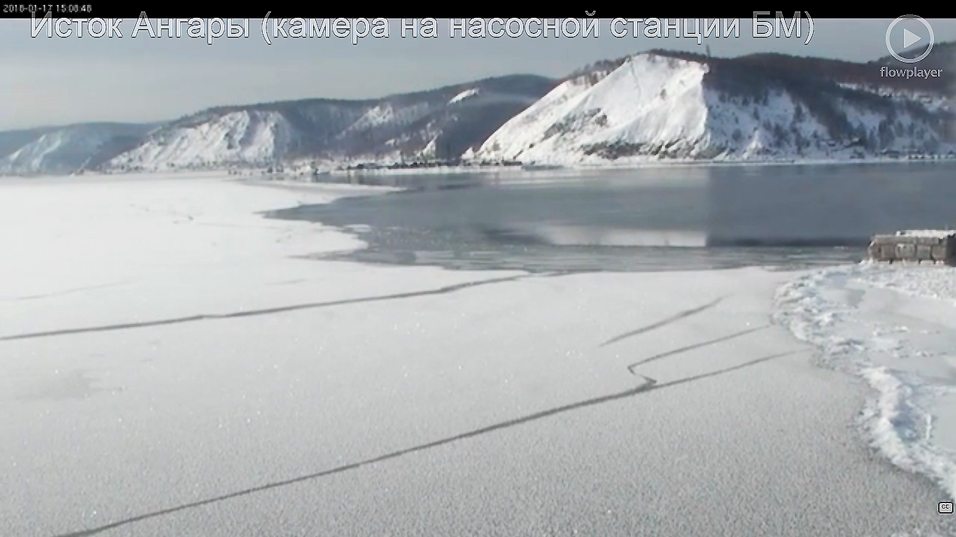
The outflow of the Angara from Lake Baikal (does not freeze over in winter). Listvyanka. January 17,2018
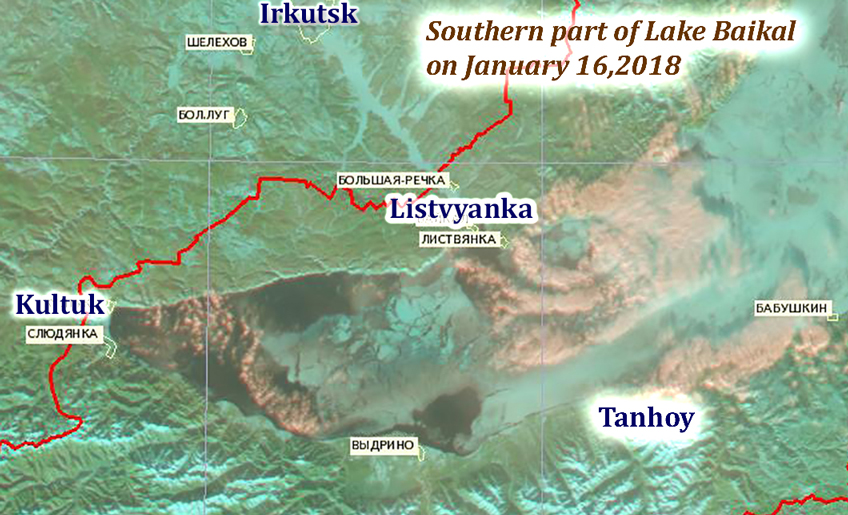
J Jan.16.The Angara wind blew strong broking down just formed ice , then coiling the ice and snow in a unique aerial ‘tornado’ shaped, whirling masses, near Listvyanka and opposite it –in Tanhoy (possible BIM finish or start lines).

Sponge and New Year fir tree on the bottom of Lake Baikal (5 m deep near Listvyanka)- we will make sure this decoration is taken back from the bottom of Lake Baikal soon….

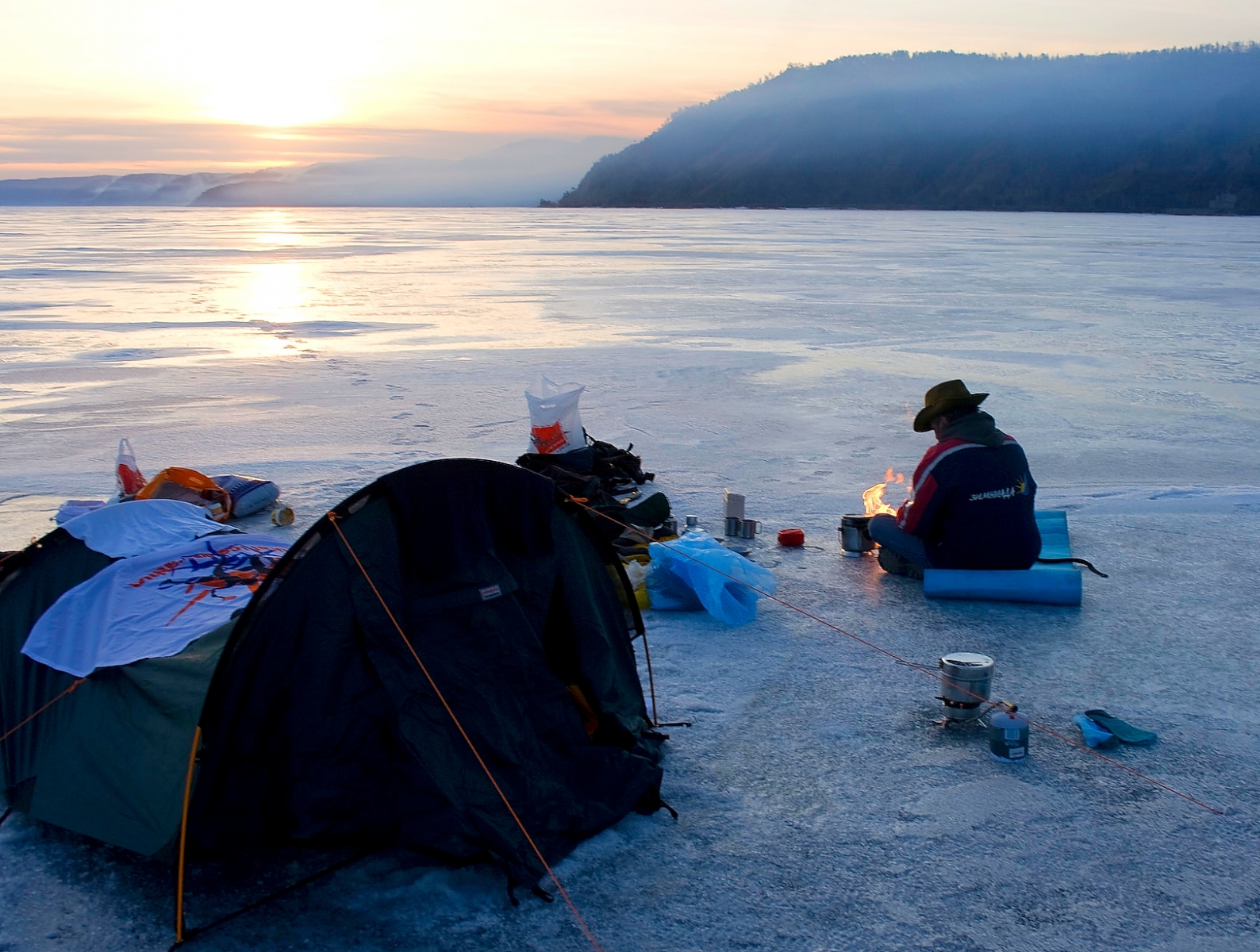
.jpg)
.png)
.png)